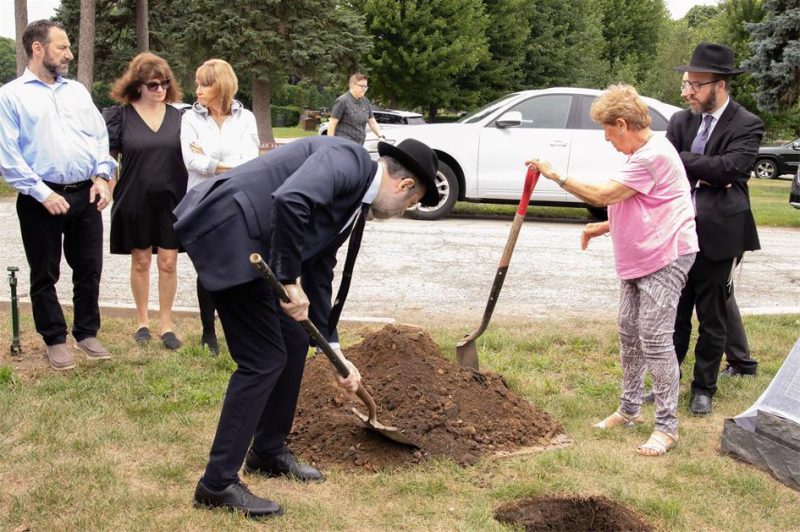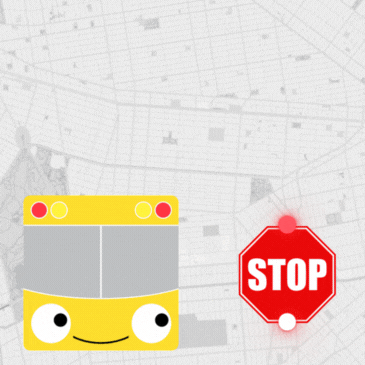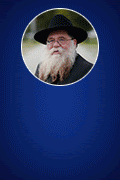
Holocaust Victim Remains Finally Get Jewish Burial
by Karen Schwartz – chabad.org
Caroline Glasser, a longtime member of the Fraida-Cameron Chabad Center of Wilmette, changed her usual Wednesday morning plans to attend a graveside ceremony at Memorial Park Cemetery in Skokie, Ill.
But the deceased was no one she knew. In fact, no one on earth knows exactly whose remains were buried that morning, including the dozens who showed up at their interment.
They just knew that there were two small urns, which contained ashes and earth from the Auschwitz death camp that had been given to the Holocaust Memorial Foundation of Illinois in the late 1970s or early 1980s.
After a board member discussed the urns with a senior member of the museum’s leadership team, the museum determined that “the best way to honor those that were murdered, is to bury the urns with a proper Jewish burial.”
Glasser says she went to the ceremony as a tribute to the 6 million Jewish men, women and children murdered in the Holocaust by the Germans and their collaborators who didn’t have a burial. “Knowing we don’t know what humans were there, it was a way to honor the Six Million that didn’t have any dignity in their death,” she says. “We need to not forget it, so we remember what could happen again in the future.”
During the morning ceremony, Teldon spoke to the gathered about the significance of the burial, calling it a “fulfillment of something long overdue. It is chesed shel emet—the truest form of kindness—because it is done for those who can never repay it,” he said. “In our tradition, burial is not a formality. It is a sacred covenant.”

The Importance of Jewish Burial
The importance of a proper burial in Jewish law and tradition cannot be underestimated. “For dust you are, and to dust you will return,” G‑d told Adam, the first human being. Chabad.org’s extensive section on Death and Mourning quotes King Solomon, who said: “And the earth returns to the land as it was, and the spirit returns to G‑d, who gave it.”
The article explains that “the next stage in the continuing saga of a human life is that the body should return to the earth, the source of all physical life, and be reunited with it, just as the soul returns to its Divine root.”
“While these victims of the Holocaust didn’t have a say in their fate and were cruelly denied the dignity of living and dying as Jews, now we can finally help them reach their eternal rest,” Teldon told Chabad.org.
Taking part in the proper burial of a Jewish person is considered a mitzvah of the highest order, he emphasized, as the Talmud (Nazir 7:1) teaches that even the High Priest, who was prohibited from attending his own family’s funerals, was required to take it upon himself to personally bury a met mitzvah, an abandoned body that had no one to attend to its proper burial.
Bernard Cherkasov, CEO of the Illinois Holocaust Museum & Education Center, spoke at the burial ceremony, highlighting the importance of carrying memory forward, and the honor due the sacred remains.
“We do not know all the names tied to this earth. We do not know all the stories. But we bury them now with dignity, with reverence, and with the promise that they are not forgotten,” he said at the ceremony, which took place in partnership with Chabad of Wilmette, Weinstein & Piser Funeral Home and Memorial Park Cemetery. “We bury you not in silence, but in sorrow—and in defiance of forgetting.”

Norman Frankel of Skokie joined other Chabad community members, museum staff, volunteers, docents, board members and more than half a dozen children of survivors at the event. It was a somber but meaningful ceremony, he says.
“It represents that Jews don’t forget, they believe everybody should have a dignified burial with respect,” he says. “It was important to be there, witnessing it and knowing that these people are finally resting in peace.”
The ceremony was also coordinated with Arielle Weininger, chief curator at the museum. Jim Herzog of Memorial Park donated the plot and Robert Sheck, of Weinstein & Piser Funeral Home, facilitated the service.
At the conclusion of the ceremony, through tears, Rodi Glass, a Holocaust survivor who escaped Amsterdam as a child, unveiled the monument. It read:
Here rest the remains of Jewish souls reclaimed from the ashes of Auschwitz, their names known only to G‑d. We honor them not only in memory but in life ensuring that their faith, their people, and their legacy endure. They were denied a proper burial, yet here they are laid to rest with dignity.

Going forward, Teldon says that he would encourage Chicago’s Jewish community members and others to pay their respects at the resting place of the remains, which is located near the cemetery’s entrance so it can be easily found.













Just Ashes
I’ve heard that only a body needs to be buried, but once it’s just ashes, unfortunately, it’s too late, and there’s nothing left that needs to be buried.
Al Pi Kiddush HaShem
When people die al pi Kiddush HaShem, and had no choice in the cremation, it’s different and it’s a mitzvah that we bury them as we find them.